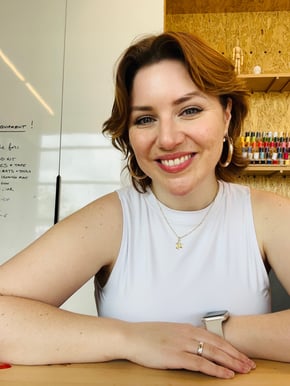I only tried to read Proust once.
Right away, the words seemed to sort of swirl and loop around each other, forcing me to start each sentence over again to figure out where I was in the story.
My internal thought process went something like this: “Young boy, mother, light, downstairs? Medicine again. Bed. Lamp. Doorknob. Kiss goodnight. Church. Book. Storm. Outside? No. Wait, what?”
Here’s a single sentence from Swann’s Way, so you can experience it for yourself:
“I would ask myself what o’clock it could be; I could hear the whistling of trains, which, now nearer and now farther off, punctuating the distance like the note of a bird in a forest, shewed me in perspective the deserted countryside through which a traveller would be hurrying towards the nearest station: the path that he followed being fixed for ever in his memory by the general excitement due to being in a strange place, to doing unusual things, to the last words of conversation, to farewells exchanged beneath an unfamiliar lamp which echoed still in his ears amid the silence of the night; and to the delightful prospect of being once again at home.”
— Excerpt from Swann’s Way by Marcel Proust.
There was really no way of making sense of it, so I made a deal with myself.
I would continue reading, but I wouldn’t worry about understanding everything. Instead, I would just let the words wash over me, and see what they left behind.
This turned out to be an excellent strategy. I would recommend it to anyone who attempts to read some Proust.
It felt good to read without pressure. And with this new mindset, I could just enjoy the ideas passing through my brain one by one.
“Silk and sunshine, tinkling glass, stormy evenings, trouble sleeping, medicine, dancing lights, goodnight kisses.”
It felt like he was sort of transferring images and textures directly from his brain into mine, without bothering to package them up according to time or place or narrative structure.
It felt less like reading a story, and more like making a pile of ideas to be shuffled around later.
In one section, the imagery was about medicine, and sleeping, and not sleeping, and a spinning paper lampshade throwing dots of golden light across the ceiling and walls.
And as I absorbed these images of sleeping and waking and lights and medicines, I realized something.
We all know the word “anaesthetic,” meaning a drug that results in temporary loss of sensation or awareness. And we all know the word “aesthetic,” which is used to talk about beauty, looks, style, taste, etc.
But until I read Proust, I had never realized that these two words are connected.
The word “aesthetic” is the linguistic opposite of the word “anaesthetic.”
Anaesthetic is to aesthetic as anaerobic is to aerobic.
So if “anaesthetic” is something that knocks you out, dulls the senses, makes you sleep…then “aesthetic” must be something that wakes you up.
We’ve all been in anaesthetic spaces before. Beige office cubes, windowless classrooms — spaces that make you feel tired, withdrawn, and numb.
And we know what an aesthetic space feels like — a space that makes you draw a sharp breath, bringing oxygen into your cells and energy into your brain, that lifts your mind and awakens your deepest aspirations.
Anaesthetic spaces makes you feel numb.
Aesthetic spaces make you feel ALIVE.
Anaesthetic clothes make you disappear.
Aesthetic clothes make you vibrant.
Anaesthetic words put you to sleep.
Aesthetic words wake you up.
I’ve used this definition of aesthetic ever since: having a quality that wakes you up and snaps you into the present.
A silky rug under your bare feet.
A fresh burst of tomato from the garden.
The first note of a classic guitar solo.
A purple crocus in the springtime snow.
If it punches through the mundane and brings you back to where you are right now, it’s aesthetic.
In this model, aesthetic isn’t any one style. It can be minimalist or maximalist, gothic or pop, natural or artificial, classic or contemporary. Anything can be aesthetic — as long as it creates that surge of internal energy.
This definition helps me understand my work as a designer, artist, and innovation strategist.
Instead of trying to make something pretty or trendy, I try to make it aesthetic.
I try to make work that slices through the fog of the mundane everyday and gives people an unexpected energy boost.
In this definition, aesthetic and function are not separate things. Aesthetic is a major contributor to function.
Workers can’t be productive or engaged in a space that makes them shut down. Students can’t share and learn in a space that makes them withdraw and hide.
For these spaces to serve their primary function effectively, they HAVE to be aesthetic.
I never finished reading Proust.
This idea of “aesthetic” grabbed me, and I ran with it.
I suppose you could say it woke me up.

.png?width=188&height=50&name=Hourglass%20Collaborative%20-%20Logo%202025%20(1).png)

COMMENTS